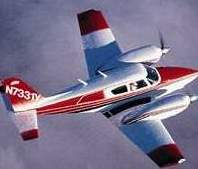Checking Crankcase Pressure
9 posts
• Page 1 of 1
You can reference a Teledyne Continental Service Bulletin.....(Works on Lycomings too.) SB M89-9 has the info you need... Max. reading should be around 110 MPH, on the ground, at full throttle. Make sure & disconnect any air-oil separators, or wet vacuum pump, if you use one. Good Luck Klusew 
- Klusew
- ICS member

- Posts: 1
- Joined: Wed Nov 26, 2008 8:02 pm
Front Seals
Hans: I can't let this go by without asking. How, why and where did you loose both front seals on your engines? I lost one once right after take off once and it was a unique experience. Tower called and said it appeared I had a loose fuel cap because there appeared to be fuel coming off my right wing. By this time I knew there was something wrong and was going to stay in the pattern and land. Turns out what the tower saw was oil as it flowed out of the dislodged nose seal and exited everywhere it could out of the nacelle. Lost 3 quartz out of 6 in minutes. I am very grateful that this happened at the airport. Can't imagine loosing them on both engines.
John
John
- 15384
- ICS member

- Posts: 115
- Joined: Wed Nov 26, 2003 5:06 pm
Engines were overhauled by Lycoming in 2000. They updated the cases with a machined groove to accept the one piece seals, one is normal and the other is .050" over. When inquired, their service rep said that the front retainer plates were only necessary with the split seal. One piece seals don't need them. OK, so be it.
I made a trip to SoDak for a reunion, and noticed that I'm getting oil streaks on the nosebowls. The plan was to investigate after the Reno races. Not enough time between coming back in early September and then going up. Then 9/11 hit. We're not going anywhere.
Disassembled the cowling, and both seals are dangling on the crankshaft. I was furious. I got a hold of the Powerplant group at the New York ACO to investigate. Got a hold of the field rep who came down and investigated. I was two months past warranty, but they did it anyway. I assisted by making sure the recess on the crankcase was extra clean with acetone.
New seals were installed, and I put on the retainer plates. No problems since. Crankcase pressure was tested with an airspeed adapted to the top of the normal dip stick. 20 MPH at full power.
I was told by both the ACO and Lycoming that the tolerance between the slinger ring and the front bearing is critical, and when correct, the oil should not leak below 2 quarts in 5 hours flying time. They checked their records, and gave me assurance my tolerances were within spec.
So, what happened? There never was a clear conclusion. I have the whistle slot on the breather tubes. My best guess is improper cleanliness on the case, and lack of the proper sealant between the case and the seals (because there wasn't any).
I made a trip to SoDak for a reunion, and noticed that I'm getting oil streaks on the nosebowls. The plan was to investigate after the Reno races. Not enough time between coming back in early September and then going up. Then 9/11 hit. We're not going anywhere.
Disassembled the cowling, and both seals are dangling on the crankshaft. I was furious. I got a hold of the Powerplant group at the New York ACO to investigate. Got a hold of the field rep who came down and investigated. I was two months past warranty, but they did it anyway. I assisted by making sure the recess on the crankcase was extra clean with acetone.
New seals were installed, and I put on the retainer plates. No problems since. Crankcase pressure was tested with an airspeed adapted to the top of the normal dip stick. 20 MPH at full power.
I was told by both the ACO and Lycoming that the tolerance between the slinger ring and the front bearing is critical, and when correct, the oil should not leak below 2 quarts in 5 hours flying time. They checked their records, and gave me assurance my tolerances were within spec.
So, what happened? There never was a clear conclusion. I have the whistle slot on the breather tubes. My best guess is improper cleanliness on the case, and lack of the proper sealant between the case and the seals (because there wasn't any).
-

Hansmeister - ICS member

- Posts: 802
- Joined: Thu Jun 27, 2002 5:44 pm
- Location: Kah-li-forn-yah
Sounds like there was no glue holding the seals in. They are glued in and the glue itself really has little to do with sealing in a conforming engine. All it does is help hold the seal in place so it can seal around the crankshaft. I've seen a seal dangling on the shaft with everything dry as a popcorn fart. Where the slinger clearance comes in is if the slinger somehow gets wavy. It then can act as a pump and no seal will stop it as it is now pressure oil. A crankshaft seal will not hold bacl much pressure. Most of the oil seal problems I've dealt with were apparently the result of bad seals as the last new one worked. The record is the 5th seal worked!
Charlie Melot Zephyr Aircraft Engines
Charlie Melot Zephyr Aircraft Engines
- charles Melot
- ICS member

- Posts: 57
- Joined: Thu Oct 21, 2004 1:44 pm
- Location: zephyrhills, FL
9 posts
• Page 1 of 1
Return to Maintenance - Airframe
Who is online
Users browsing this forum: No registered users and 12 guests
